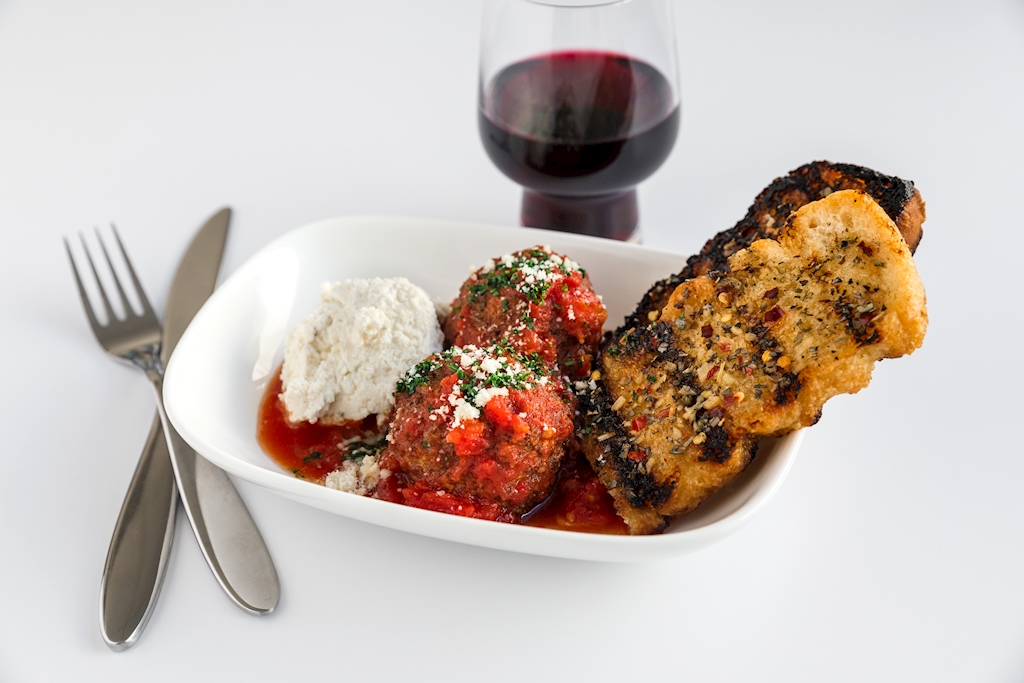
Back in 2014, the Australian airline Qantas launched a new dining concept for its Economy Class passengers on longer international flights. The idea was to improve both the quality and quantity of food the airline offered while also making the service easier to deliver for its cabin crew. The concept has been well-received but surprisingly, few other airlines have followed in Qantas’ footsteps.
We’re so used to airlines launching multi-million dollar investments in Business Class F&B and with very good reason – it’s the one cabin that can generally be guaranteed to turn a sizeable profit. And with competition between airlines heating up, the investment in food, drink and service for premium passengers continues apace.
Meanwhile, Economy passengers, while normally making up the majority of any airline’s customers, have been largely ignored. The most anyone can hope for is that the food is at least edible (and that’s even if your airline of choice provides a meal as standard). When it does, you can safely assume everything will be given at once on a tray.

It’s hardly premium but what can you expect if you fly Economy? Qantas, however, ditched those assumptions when it relooked at the way it delivered food and drink at the back of the plane. The airline got rid of the age-old tray and instead delivered larger dishes on lightweight chargers. A dessert, warm bread roll and cutlery pack were handed over separately.
The benefits? A third meal choice as standard, larger portion sizes, quicker service time, and more snacks offered throughout the flight. The concept, while arguably revolutionary, was also remarkably simple. The question is, why have other airline been so slow to pick up on this passenger experience enhancing service concept?
Well, most likely because the majority of airlines are still focused on improving the Business Class experience while realising that most low-fare passengers don’t expect anything other than the status quo.
Times are, however, changing. Passenger’s expectations are getting higher and in developed economies where customers are willing to pay a premium price for an “experience”, airlines would be foolish to stand still.
And now the competition is finally starting to catch on to the Qantas “Trayless service” – but this time it’s been taken to the next level. Let’s call it “Trayless 2.0”.

So what is Trayless 2.0? Essentially, it uses the same type of Qantas serviceware but separates out the dishes into a series of meal courses – just like you would experience if you had a three or four-course meal in a restaurant.
The Atlanta-based Delta Air Lines is currently experimenting with the concept on just one international flight between Portland and Tokyo, Japan at the moment. The airline announced the experiment late last year saying it was “one of Delta’s biggest investments in the Main Cabin dining experience to date,” but remained remarkably coy about what that investment would include.
Here’s how the airline explained the concept at the time:
“Our goal is to truly recreate the experience our customers would have at their favourite restaurant at 30,000 feet, taking into account what menu items naturally complement one another, the service behind the offerings and the overall presentation,” commented Lisa Bauer, who’s Delta’s vice president for onboard service.
We knew the enhancements would include “customer experience menu cards” as well as redesigned trays, service ware, and cutlery. Part of creating a “restaurant-style dining experience.”
How does work in practice? Flight attendants simply deliver every course of the meal separately – one after the other. Tray’s are a thing of the past and instead, large napkins and chargers are used. Delta call’s it ‘Bistro Dining’ and apparently, the idea was created by a customer experience executive who was brought in from the cruise industry.

And it would appear, the Trayless 2.0 experience is so good that the national airline of Saudia Arabia, Saudia is also experimenting with the concept – even going so far as to take inspiration for the name by pretty much copying Delta: Bistro by Saudia.
The airline says over 200,000 people have already experienced the new dining experience since it launched in April – now available on select flights from Saudia Arabia to Paris, London, and Manchester. Starting with a warm towel service, flight attendants then make their way through the cabin, offering drinks, starters, main courses, desserts and a hot drink, one after the other.
Personally, we’re not sure whether Trayless 2.0 would suit every airline and we can see in some cases this type of service actually lengthening the overall service time – something the original concept was meant to reduce. Nonetheless, it remains a fantastic idea that can not only improve the dining experience but also reduce waste and overheads for airlines.
Expect more carriers to follow suit soon.
Mateusz Maszczynski honed his skills as an international flight attendant at the most prominent airline in the Middle East and has been flying ever since... most recently for a well known European airline. Matt is passionate about the aviation industry and has become an expert in passenger experience and human-centric stories. Always keeping an ear close to the ground, Matt's industry insights, analysis and news coverage is frequently relied upon by some of the biggest names in journalism.







